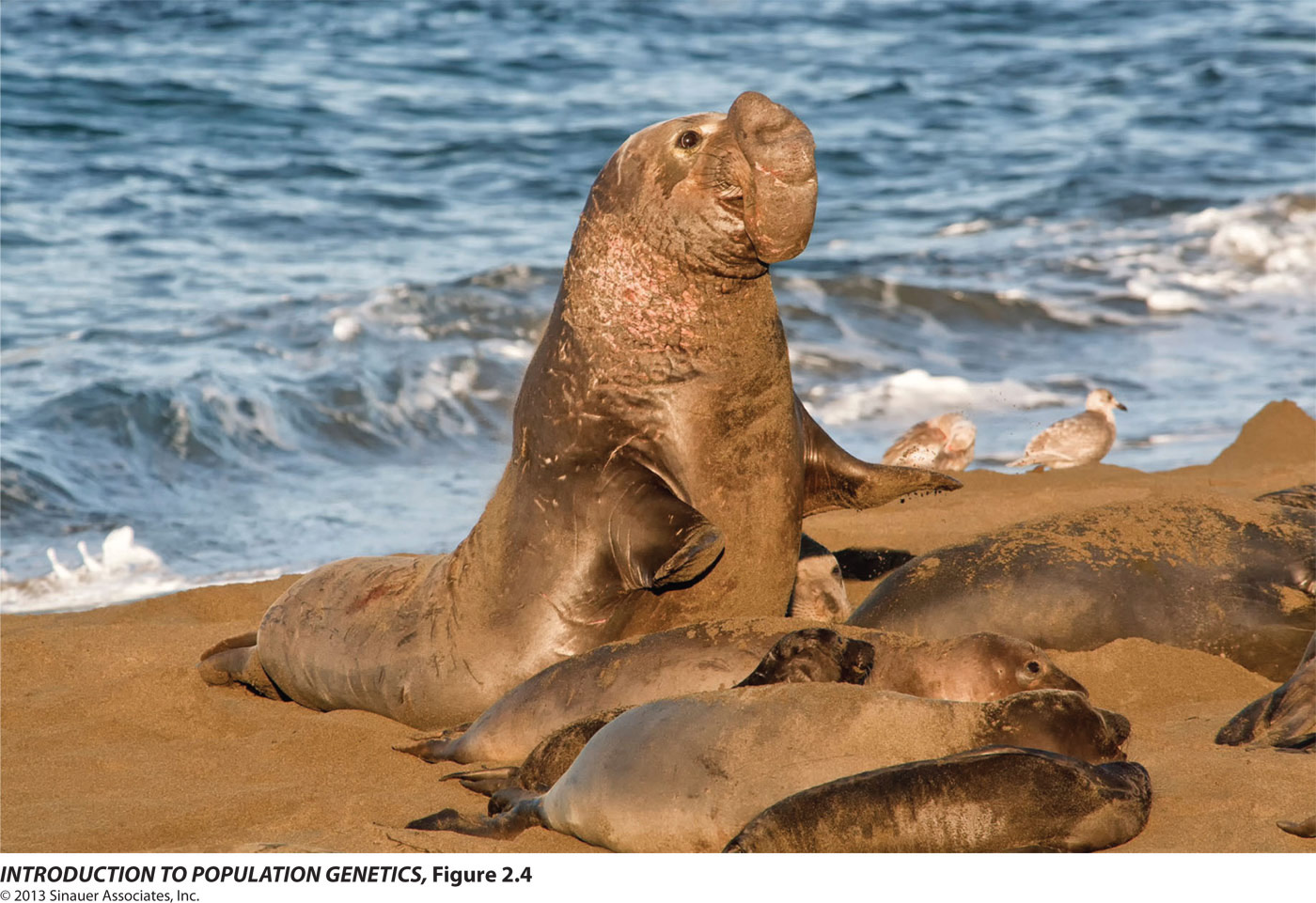
The effect of a Genetic Bottleneck on Elephant Seals
See discussion for Fig 2.3. Northern
Elephant Seals (Mirounga angustirostris)
underwent a drastic reduction population at the beginning
of the 19th century when they were hunted for their
blubber: estimates are that there were < 20 individuals
by the time protection was introduced in the 1920s.
Rookeries such as this one at Año
Nuevo Island on the California coast are now
protected, and overall seal numbers at several such
reserves have increased to >100,000. Observed genetic
variation has not recovered to that expected for this
population size at equilibrium.
Recovery of genetic variation in Elephant Seals is further limited by their mating system. Any given rookery is dominated by a single male [above, with prominent proboscis] who guards "harems" comprising almost all of the reproductive females. Non-alpha males father few or none of the pups in the next generation. This reduces the effective population size of the rookery.
Recovery of genetic variation in Elephant Seals is further limited by their mating system. Any given rookery is dominated by a single male [above, with prominent proboscis] who guards "harems" comprising almost all of the reproductive females. Non-alpha males father few or none of the pups in the next generation. This reduces the effective population size of the rookery.
Figure ©2013 by Sinauer; Text material © 2021 by Steven M. Carr